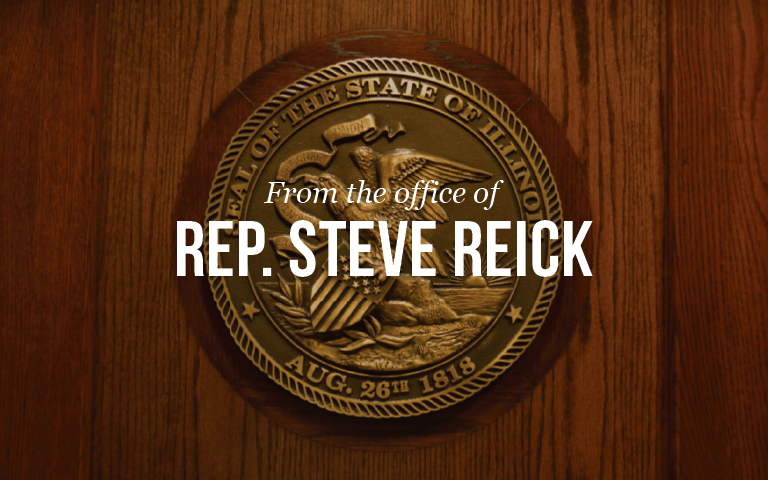With the House convening on Thursday to consider energy/climate legislation that’s been negotiated by Democrats, labor unions and environmentalists, I’ve been reading up on what the bill provides and have a few observations and questions.
First of all, the bill is long on social engineering and very light on the type of engineering that will actually keep the lights on. Along with a laundry list of jobs programs, commissions and task forces, there are programs sprinkled in which will provide grants intended to ease the pain of transition to communities that are losing their coal, gas and (ultimately) nuclear facilities.
Anyone who’s paying attention will know the major components of the bill that actually affect how we’re going to generate electricity over the next 25 years and keep the lights on thereafter:
- Provides roughly $700 million in assistance to Exelon over 5 years for Dresden, Byron, and Braidwood nuclear plants;
- Increases the Renewable Portfolio Standard (RPS) goal to 40% by 2040 and 50% by 2050;
- Increases the rate cap on renewables from 2.015% to 4.25%, which will increase the RPS budget from $230 million to more than $550 million per year, to be paid for by Com Ed ratepayers;
- Includes a Coal to Solar program to repurpose downstate coal sites with utility scale wind and battery storage facilitates (which don’t yet exist);
- Phases out for-profit coal plants by 2030, and publicly-owned coal plants and cogeneration plants by 2045. Natural gas plants will be required to close between 2030 and 2045, based on their emissions rates. All natural gas plants in the State will be required to close by 2045. (This begs a question: Energy can’t be stored; it must be used as it’s generated. At those times when the wind doesn’t blow and the sun isn’t shining, how are we going to generate enough electricity to meet demand if we’ve shut down all the coal and gas plants?)
The bill assumes from the outset that climate change is an existential threat and that Illinois will lead the way in showing the world how we can eliminate pollution from fossil fuels. Try telling that to the Chinese and the millions of people who live in substandard conditions sub-Saharan Africa.
What we’re faced with is a risk problem, by which I mean that nobody knows what average temperatures or sea levels will be in 50 years, and if they say they do, they’re lying to you. What we’re confronted with is a range of possible outcomes, from 1% to 100%, and by assuming the answer is 100%, we completely take off the table all of the possible mitigations that can either reduce the risks or lessen the outcomes of climate change at acceptable cost, both economic and in terms of liberty. And don’t discount that last point, because government control of energy generation that suffocates innovation and economic growth will ultimately result in government control of its use, as is being seen in California with its rolling blackouts.
Think of the incredible transformation that happened in the telecommunications industry over the past 30 years, where we went from sending phone calls over copper wires to fiber optic cables made of sand to the wi-fi waves of today. We need to apply the same thinking to energy, from nuclear power to carbon capture and sequestration. Innovation isn’t planned, it happens when people try to solve problems in a system that encourages and rewards problem-solving. How much economic dynamism are we willing to sacrifice by completely shutting an industry down and not giving it the opportunity to innovate?
And what about nuclear? There’s no discussion about it in the bill other than the $700 million subsidy to prop up Exelon’s aging nuclear fleet, which went online in the mid to late 1980’s and won’t last forever. Nuclear plays no part in the rush to carbon-free energy either as source of base load capacity or as backup power when renewables aren’t enough.
Nuclear has its problems, and it’s never lived up to its promise of providing cheap and plentiful power. But to a great extent that’s a function of regulatory strangulation and liability concerns. We’re also subsidizing excess capacity. If we can’t sell it on the open market for what it costs to produce, I’m open to the idea of reducing capacity, but until we know how bad a hit we’re going to take with this quixotic rush to our wind and solar utopia, we need to keep our nuclear fleet intact.
We also need to upgrade it. Our failure to have done so has much to do with public attitudes rooted in the memory of Three Mile Island (1979) and Chernobyl (1986). Technological advances since then have made nuclear a much more reliable and scalable choice for non-polluting power, and modular reactors would allow power generators to be placed closer to the communities they serve, drastically reducing transmission cost.
We need a more optimistic and realistic environmentalism than is presented with this bill which once again puts government in the position of picking winners and losers. We have problems, but they will only be solved through technological innovation and dynamism, and S.B. 18 kills that baby in the crib.
